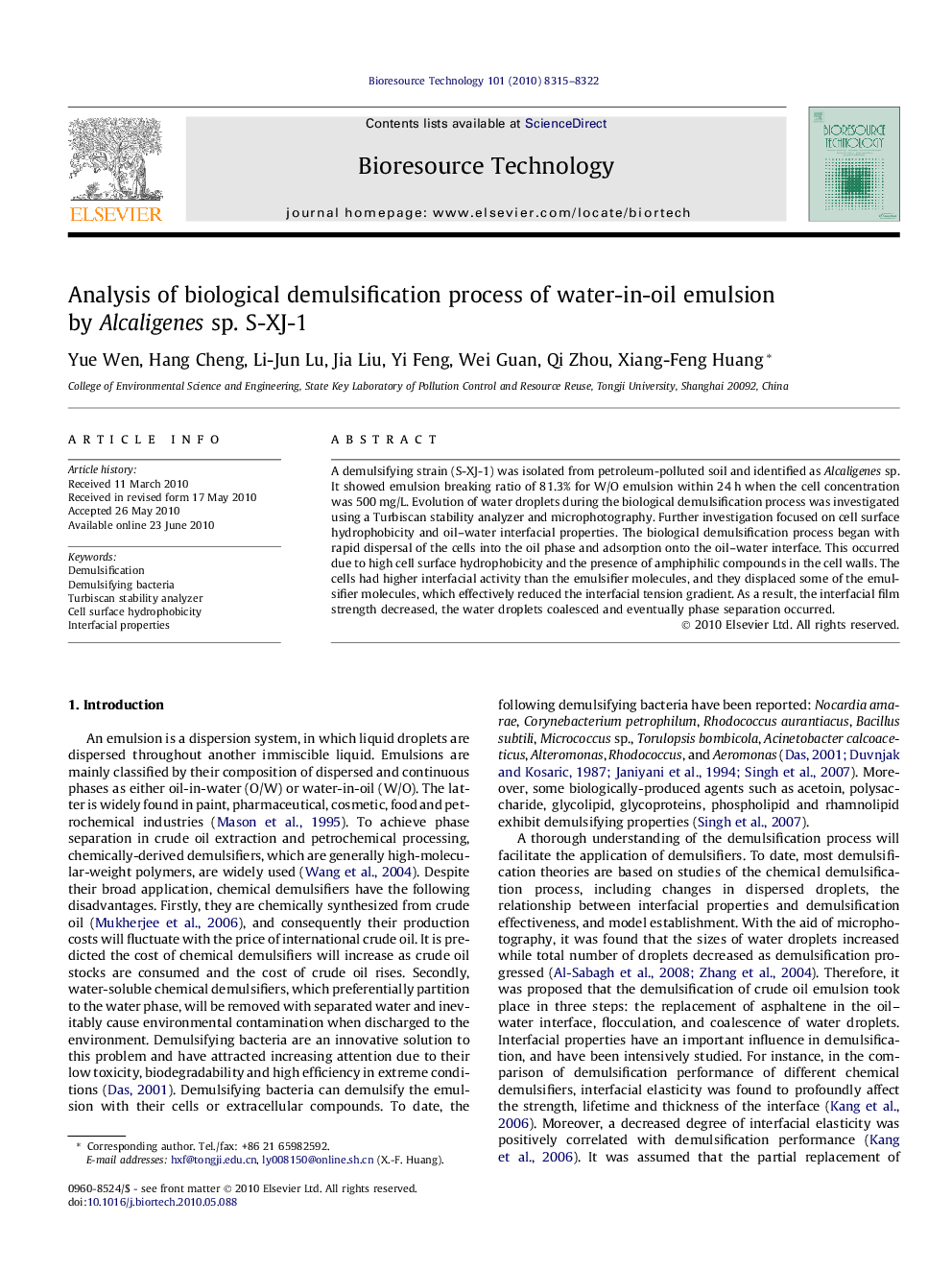| Article ID | Journal | Published Year | Pages | File Type |
|---|---|---|---|---|
| 682170 | Bioresource Technology | 2010 | 8 Pages |
A demulsifying strain (S-XJ-1) was isolated from petroleum-polluted soil and identified as Alcaligenes sp. It showed emulsion breaking ratio of 81.3% for W/O emulsion within 24 h when the cell concentration was 500 mg/L. Evolution of water droplets during the biological demulsification process was investigated using a Turbiscan stability analyzer and microphotography. Further investigation focused on cell surface hydrophobicity and oil–water interfacial properties. The biological demulsification process began with rapid dispersal of the cells into the oil phase and adsorption onto the oil–water interface. This occurred due to high cell surface hydrophobicity and the presence of amphiphilic compounds in the cell walls. The cells had higher interfacial activity than the emulsifier molecules, and they displaced some of the emulsifier molecules, which effectively reduced the interfacial tension gradient. As a result, the interfacial film strength decreased, the water droplets coalesced and eventually phase separation occurred.
